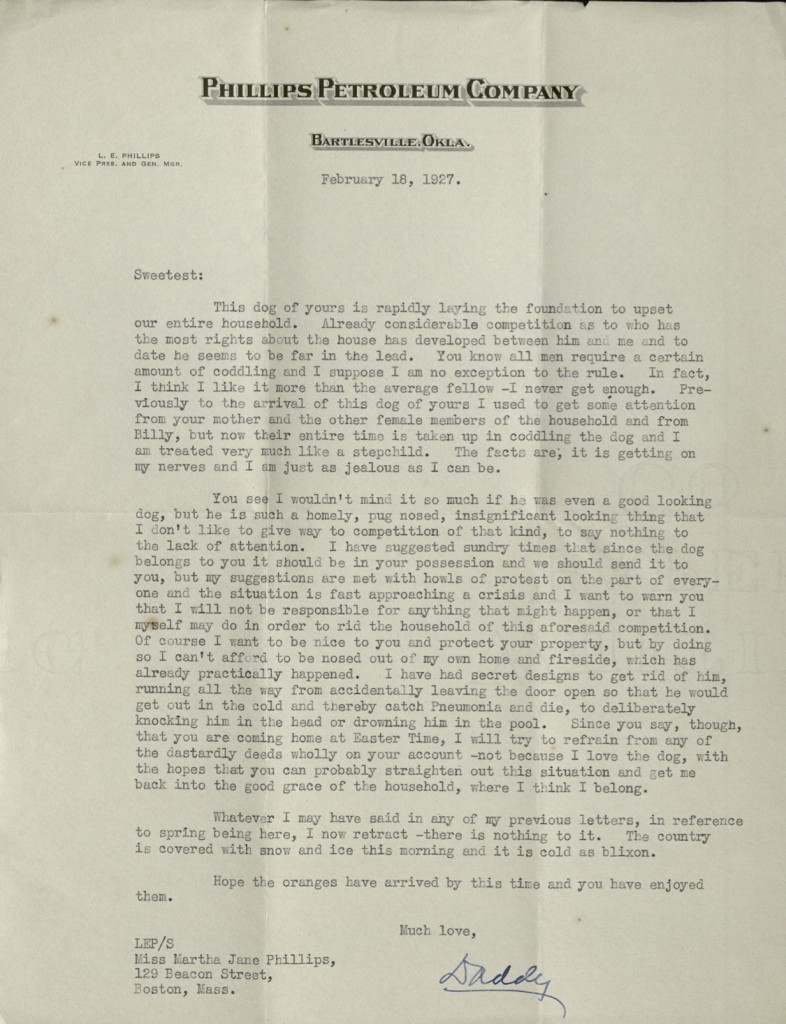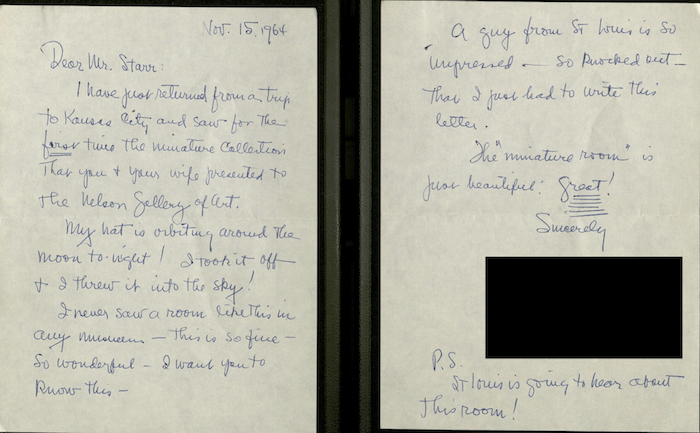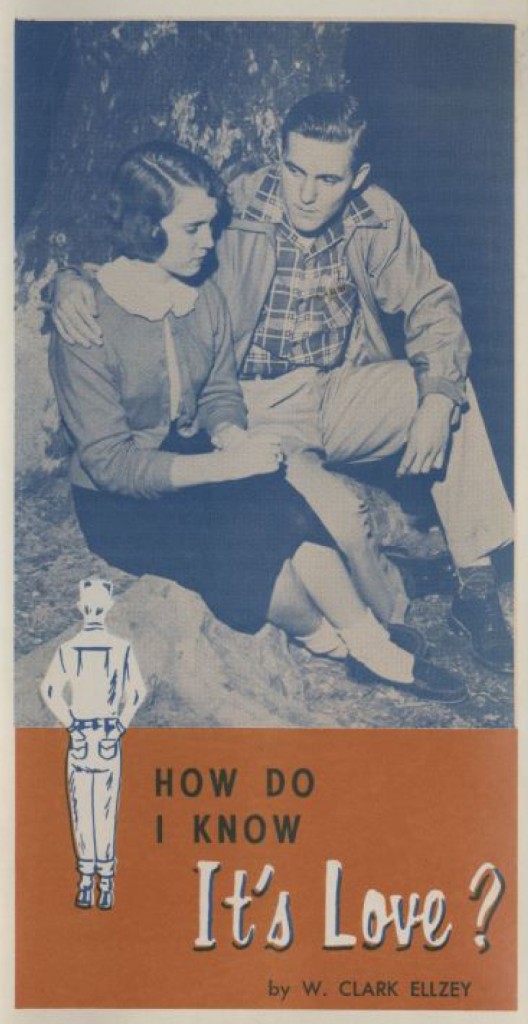“You are just my idea of what a daughter and young woman should be.”
— L.E. Phillips to Martha Jane Starr
Undoubtedly, one of the greatest highlights of the Martha Jane Starr Collection is her correspondence with her father, L.E. Phillips (1876-1944), whom Martha Jane affectionately called “Daddy Lee.”
A co-founder of Phillips Petroleum, L.E. built wealth and opportunity for his family in business, but in his letters to Martha Jane, he exposed a sweetness, wit, and deep love for his daughter.
L.E. wrote the majority of the letters while Martha Jane attended boarding school in Boston. His letters are full of wisdom and advice for his daughter, and included frequent updates on the happenings around the house while Martha Jane is away. Daddy Lee’s sense of humor sings through in almost every letter, as well as his very deliberate encouragement and praise of his daughter.
One of the most moving letters of the collection is his letter to Martha Jane on the eve of her wedding. In his lengthy letter, L.E. offers his daughter his own philosophy of marriage: “The foundation is to be built and as individuals you should practice patience, forbearance, tolerance, charity and unselfishness, recognizing each other’s rights at all times. Doing this, you will gradually grow into each other’s ways so that a real partnership may be maintained.” It is perhaps from Daddy Lee’s philosophy of marriage that Martha Jane developed the idea to call her own husband her “life’s partner.”

Martha Jane Starr’s parents, L.E. and Lenora Phillips, whom she affectionately called Daddy Lee and Miss Nonie.
L.E. Phillips’ letters to his daughter offer a window into the past and into a truly loving father-daughter relationship. His encouragement of Martha Jane to develop her mind, her integrity, and her sense of culture clearly acted as a great influence on Martha Jane’s future successes.
The collected correspondence of L.E. Phillips and Martha Jane Starr is available for viewing at LaBudde Special Collections, and is recommended as highly entertaining reading.





